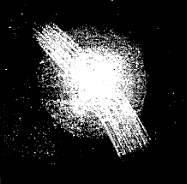Top Qs
Timeline
Chat
Perspective
Great Comet of 1823
Comet From Wikipedia, the free encyclopedia
Remove ads
The Great Comet of 1823, also designated C/1823 Y1 or Comet De Bréauté-Pons, was a bright comet visible from December 1823 to April 1824.
Remove ads
Discovery and observations
It was independently discovered by Nell de Bréauté at Dieppe on December 29, by Jean-Louis Pons on the morning of December 30, and by Wilhelm von Biela at Prague on the same morning.[2] It was already visible to the naked eye when discovered: Pons initially thought he was seeing smoke from a chimney rising over a hill, but continued observing when he noticed it did not change appearance. He was later to note that the comet was, puzzlingly, more easily visible to the naked eye than through a telescope.[2] Biela also noted that it was noticeably brighter than the Great Comet of 1819 had been.[2]
The comet was particularly known at the time for exhibiting two tails, one pointing away from the Sun and the other (termed an "anomalous tail" by Karl Harding and Heinrich Olbers)[3] pointing towards it.
Caroline Herschel recorded an observation of the comet on January 31, 1824, as the last entry in her observing book.[4]
Pons was also the last astronomer to detect the comet, on April 1, 1824.
Remove ads
References
External links
Wikiwand - on
Seamless Wikipedia browsing. On steroids.
Remove ads

